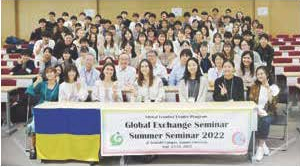

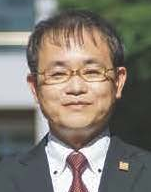
Professor Takaaki Suzuki is engaged in the
design, analysis, and development of ultra-fine processing
technology and its systems in units of micrometers and nanometers.
The original processing technology he developed is called
"Three-dimensional (3D) lithography," announced in 2006. It is an
innovative photolithography method (light shaping) where the
inclined substrate is rotated during exposure. Previously, there
was no technology capable of processing the intermediate size
between "small machinery/precision products" found in smartphones
and the nanoscale precision of semiconductors, which roughly falls
from a few micrometers to sub-millimeters. The 3D lithography
method is the method aiming to fill this gap. He has received the
Minister of Education, Culture, Sports, Science and Technology
Award and obtained patents in Japan and the United States. 3D
lithography has evolved into an innovative technology capable of
processing three-dimensional microstructures previously
unachievable with existing techniques. It is now applied in
high-performance biotechnology, optics, and IoT (Internet of
Things), advancing innovation in Japan's manufacturing sector.
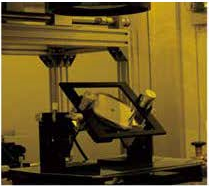
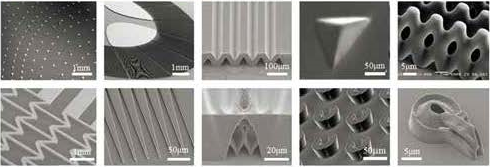

Assistant Professor Anna Kuwana researches "fluid dynamics." Fluids, such as water and air, are representative examples, and their motion can be observed in various everyday situations. For instance, Hydropower, which accounts for approximately 8% of domestic power generation, utilizes the force of flowing water to rotate large turbines and generate electricity. Indoor ventilation, which has gained attention during the COVID-19 pandemic, is one scenario where the management and control of fluid motions are essential. Her specialization lies in the technology of simulating and observing fluid phenomena by solving equations that describe fluid motion using computers. This field of study is known as computational fluid dynamics.

Within our bodies are biomolecules called glycans, consisting of monosaccharides such as glucose linked together in chain-like structures. Glycans are involved in various biological phenomena, including viral and bacterial infections, carcinogenesis, and cell differentiation. Due to their significance in these processes, they are often called the "third chain of life," following nucleic acids and proteins. For example, in genetic information transfer in living organisms, DNA serves as the blueprint, and the information is transmitted from DNA to RNA through transcription and then from RNA to protein through translation. However, there is an additional step in protein synthesis known as "post-translational modification." This process diversifies the properties and functions of proteins and is involved in protein folding (the process of acquiring stable, distinctive, and functional structures), stability, and transport. Approximately 60% of proteins undergo post-translational modification in glycosylation, where glycans are added to them.

Assistant Professor Ayako Yano has been researching the infiltration of liquids into micro-scale structures with dimensions in the range of micrometers since 2020. This research is aimed at applications in industries that involve liquid-based surface treatment of microfabricated systems, and she is compiling fundamental data on their characteristics. For example, in semiconductor manufacturing processes, wafer surfaces with microscale irregularities are cleaned with water, but a challenge arises in determining whether the cleaning reaches all the gaps. She hopes to apply her research findings to address such issues in this field. Currently, she is conducting experiments using microstructures made of glass and collecting data. Starting from April 2022, she has been supported by the Grant-in-Aid for Early-Career Scientists Program.

Associate Professor Tetsuya Yamagami is researching methods for preventing the onset and progression of dementia, as well as preventive care and community rehabilitation. He has been consistently engaged in research on dementia rehabilitation since his undergraduate study at the university. This research aims to delay the progression of dementia and enable individuals to maintain a high quality of life according to the severity of their symptoms, fostering a sense of purpose. Over the past five years, he has been conducting collaborative research with a company on the relationship between the daily walking speed of older adults and cognitive function. He intends to apply this research to the secondary prevention (early detection) of individuals at high risk of dementia.

Associate Professor Takehiko Yokobori is working on two challenging themes related to cancer. One is the development of ideal antibodies that attack cancer cells and enhance immune function. The other is the creation of "cancer markers" that can detect the presence and progression of various types of cancer. He is a surgeon, and he started researching "cancer markers" during the latter stages of his graduate program, but after completing his studies, he transitioned to the clinical field. After that, however, he shifted his focus towards research. He felt a growing desire that if patients' diseases could be diagnosed earlier, he could help more cancer patients. Therefore, he is actively engaged in research to deliver his findings to patients suffering from cancer and make a difference in their lives.
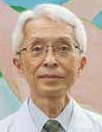
Professor Masato Fukuda leads education and research in the Department of Neuroscience and Psychiatry of the Graduate School of Medicine. He also provides clinical care to patients visiting the psychiatric neurology department at the Gunma University Hospital. Mental disorders are one of the five national diseases defined by medical regulations. Amidst the increase in individuals, particularly young people, facing concerns and anxieties during the COVID-19 pandemic, Professor Fukuda, as a psychiatrist and researcher at the university, has gained attention from educators and individuals that support young people. His work has been highly praised based on his achievements in education, research, and clinical work and his longstanding efforts in collaborating with society (such as distributing information to young people and promoting societal understanding of mental illnesses). His achievement is a model of collaboration between universities and society regarding young people's mental health. As part of Gunma University's recent community contribution project, three booklets on collaboration with society have been created and published. One of the booklets, published this spring, was in response to the revival of mental disorder education in high school health and physical education after a 40-year hiatus, and it received significant attention, including coverage in national newspapers. Alongside the practical application of optical topography examinations in diagnosing mental disorders through brain imaging research, these efforts aim to achieve a "mentally healthy society."
Gunma University, in collaboration with the Ukrainian Embassy, has been accommodating Ukrainian students and researchers who were deprived of learning opportunities due to the armed invasion by Russia in February of this year. The university has provided them with accommodations and waived their tuition fees. Additionally, they have received support for travel and living expenses from the Japan Foundation and economic and material assistance from Gunma Prefecture, Maebashi City, Takasaki City, Maebashi Rotary Club, and the general public. As a result, one researcher and four students can pursue their studies and research with peace of mind.
In September, three of them gave a lecture at Ota High School about the current situation in Ukraine. They used photographs to depict the devastating conditions of the war-torn cities and expressed their desire for peace, urging the audience to understand the truth. Students responded with comments such as, "We were once again reminded of how terrible it is for everyday life to be destroyed by one person's decision. We want to think about what we can do for the evacuees from Ukraine. We want to discern the facts from misinformation."
They stated, "Our mission, as those who have
found refuge here in Japan, is to convey the truth of what is
happening in Ukraine to as many people as possible in Japan."

